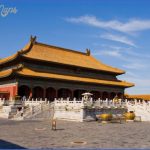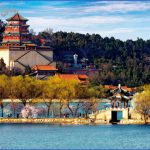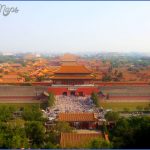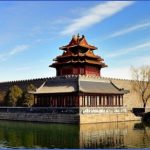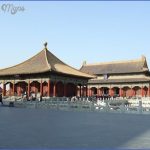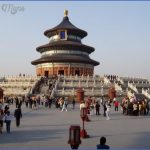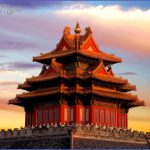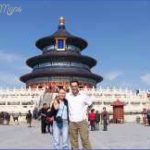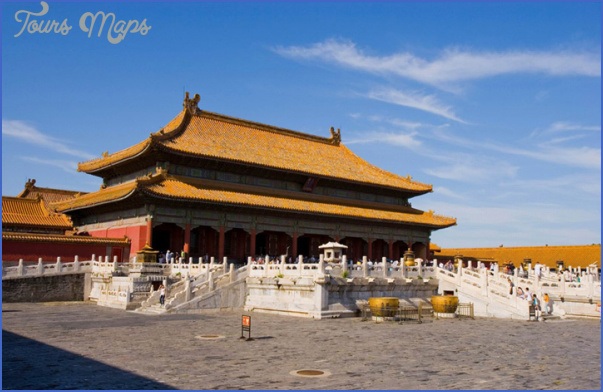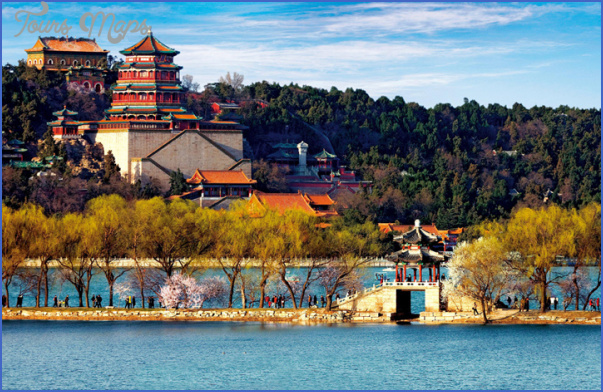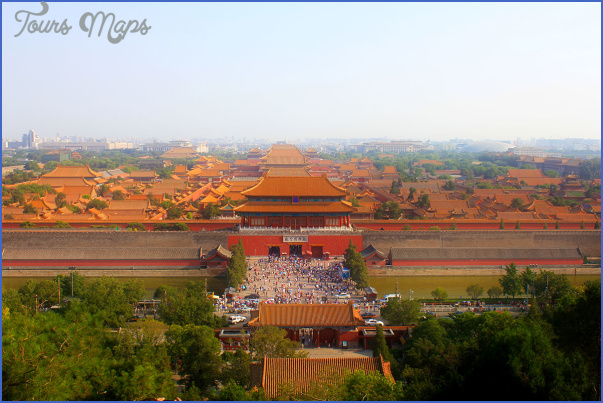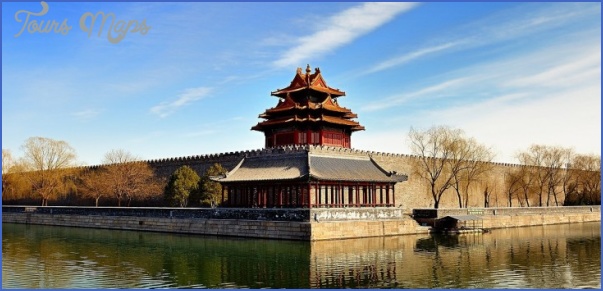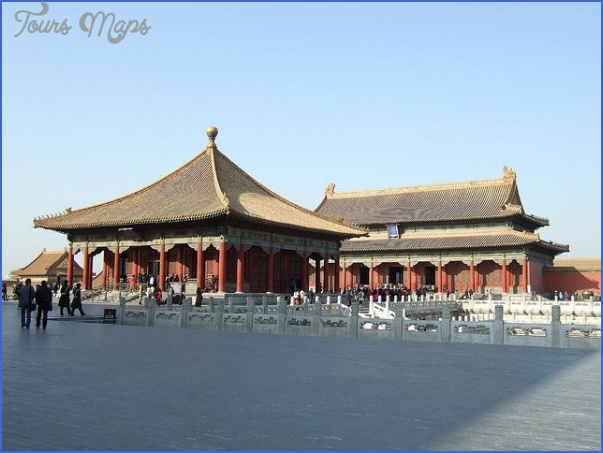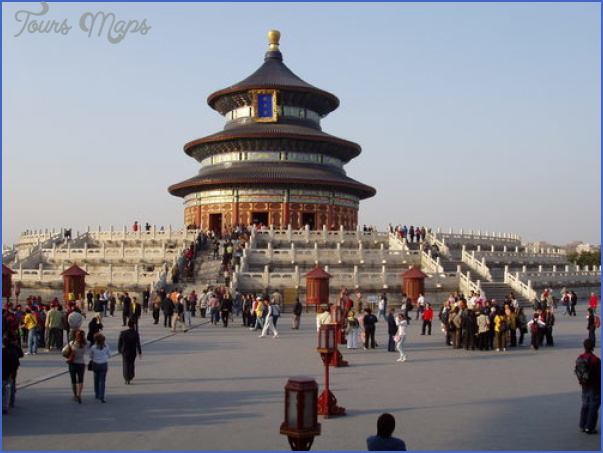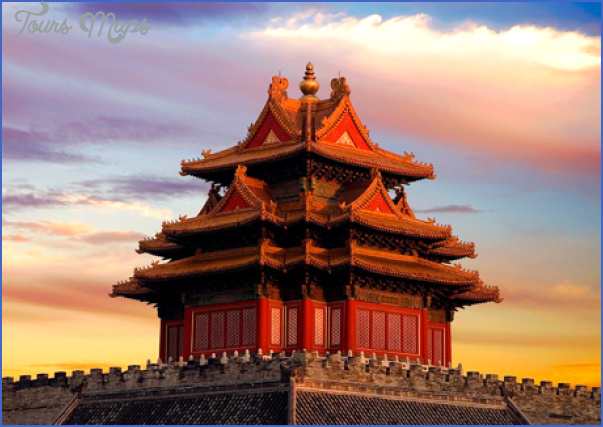The Hall of Middle Harmony is situated behind the Hall of Supreme Harmony. This was where the emperor rested, and received homage from the officials and masters of ceremony before passing into the Hall of Supreme Harmony. Sometimes he came here to read his ministers’ reports and speeches. Once a year in this hall the emperor inspected the seed in order to guarantee a good harvest.
The Hall of Preserving Harmony is situated behind the Hall of Complete Harmony. It functioned as the emperor’s banquet hall. From the late 18th c. the imperial examinations were held here. Behind the hall the Dragon Pavement leads down from the terrace. Carved from a 250 tonne lump of marble, it forms the middle of three flights of steps.
The Hall of Literary glory, to the south-east of the three main halls, was reserved for the prince who was heirtothethroneduringthe Ming dynasty. From 1644 to 1911 it was used as a study for the emperors. The Imperial Library (Wenyuan Ge) is situated next to this hall.
To the south-west of the main halls stands the Hall of Military Courage, which served the emperors as a permanent residence and private audience hall.
The three main halls together with the side buildings form the so-called outer courtyard, behind which are concealed the inner chambers consisting of three palaces and twelve courtyards (six to the left and six to the right). The private apartments of the imperial family were situated here.
The Palace of Heavenly Purity is situated behind the gate ofthe same name (Qianqing Men); it separates the outer courtyard from the inner chambers. During the Ming period (1368-1644) this palace was the living quarters of the emperors, but after the 1730s it was used by them for studying.
The Palace of Union between Heaven and Earth stands between the Palace of Heavenly Purity and the Palace of Earthly Tranquillity. During the Qing period, (1644-1911) the coronations and birthday celebrations of the empress took place here. In the building today are 25 imperial seals of China, a glockenspiel, and a bronze water clock.
The Palace of Earthly Tranquillity was the living and sleeping quarters of the empresses during the Ming period (1368-1644). Sacrificial rites were performed here under Qing rule (1644-1911). The emperor and empress spent their wedding night in the bridal chamber.
Behind the Gate of Earthly Tranquillity at the rear exit of the palace lies the garden (130m/142yd across, 90m/98yd long) which provide an excellent example of Chinese landscape architecture. Old pines, artificial slopes, lush bamboo plants, rare flowers, and charming pavilions dating from the Ming period, together form a harmonious garden landscape.
The Hall of Imperial Peace is situated in the centre of the gardens, its entrance being guarded by two unicorns.
Around the six western courtyards are six palaces where the empresses, concubines, and princes resided. Officially the emperor was allowed three wives, six female favourites, and 72 concubines, although some kept up to 3000 women. These women mostly led a wretched existence.
The six palaces in the six eastern courtyards today function as museums. They house collections of great historical, archaeological, and cultural importance: paintings, ceramics, bronze vessels, handcrafted objets d’art, period clocks, and valuable gifts.
At the easternmost end of the palace complex stands the Palace of Tranquillity and Longevity, which was inspired by the Palace of Earthly Tranquillity. It was the residential quarters of the widowed empress Cixi at the end ofthe 19th c.
This eastern section can be reached through the Xiping Men Gate, alongside which runs the 30m/33yd long Nine Dragon Wall.
Beijing Travel Guide Photo Gallery
Maybe You Like Them Too
- The Best Cities To Visit in The World
- World’s 10 Best Places To Visit
- Coolest Countries in the World to Visit
- Travel to Santorini, Greece
- Map of Barbados – Holiday in Barbados

